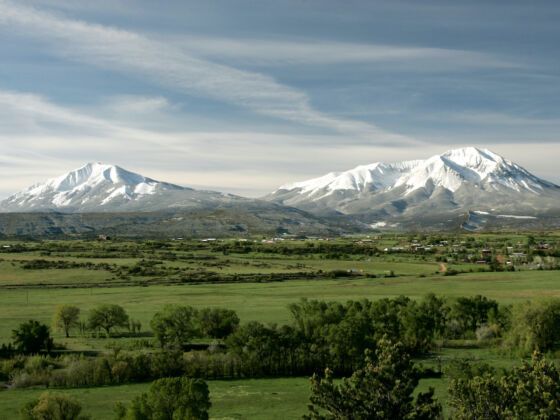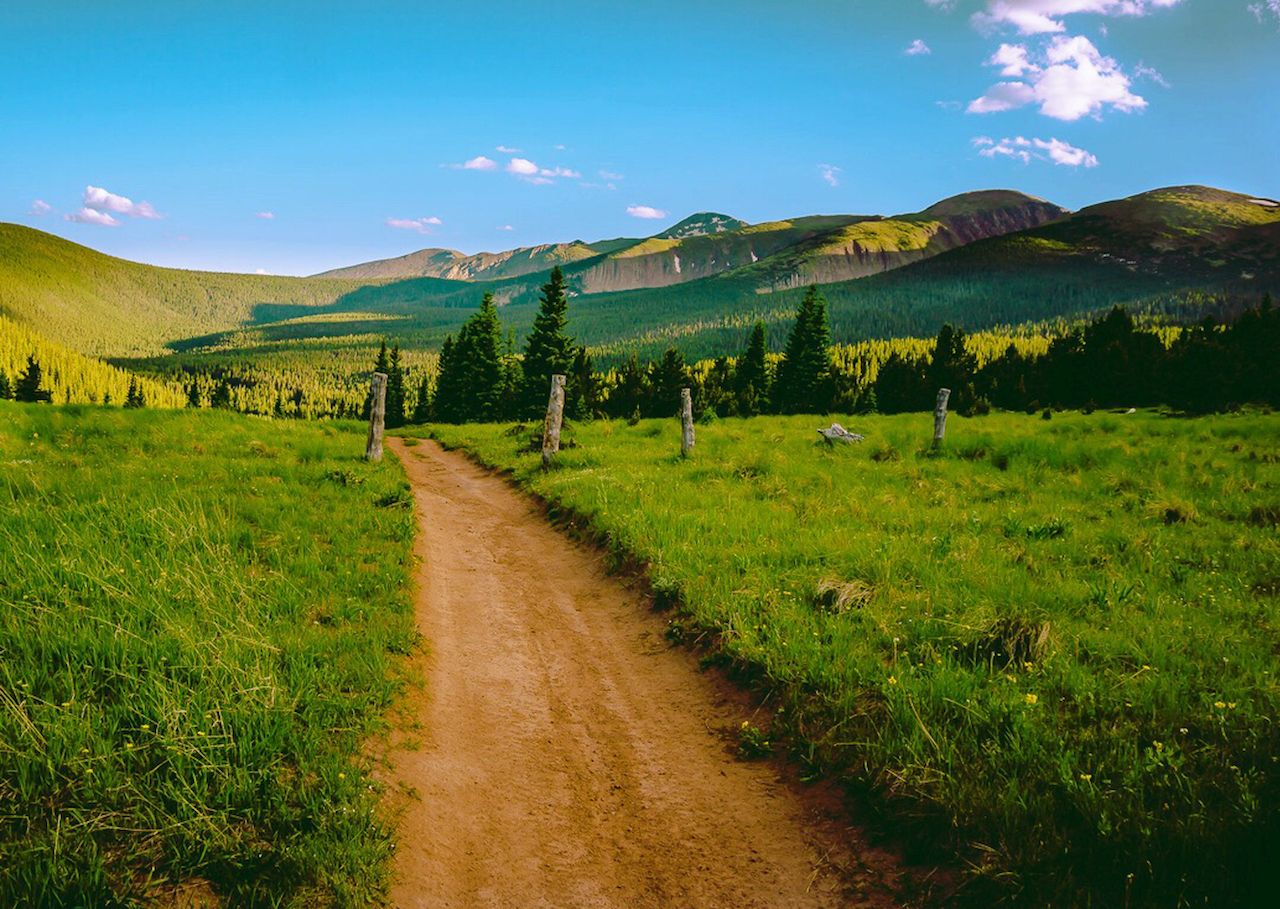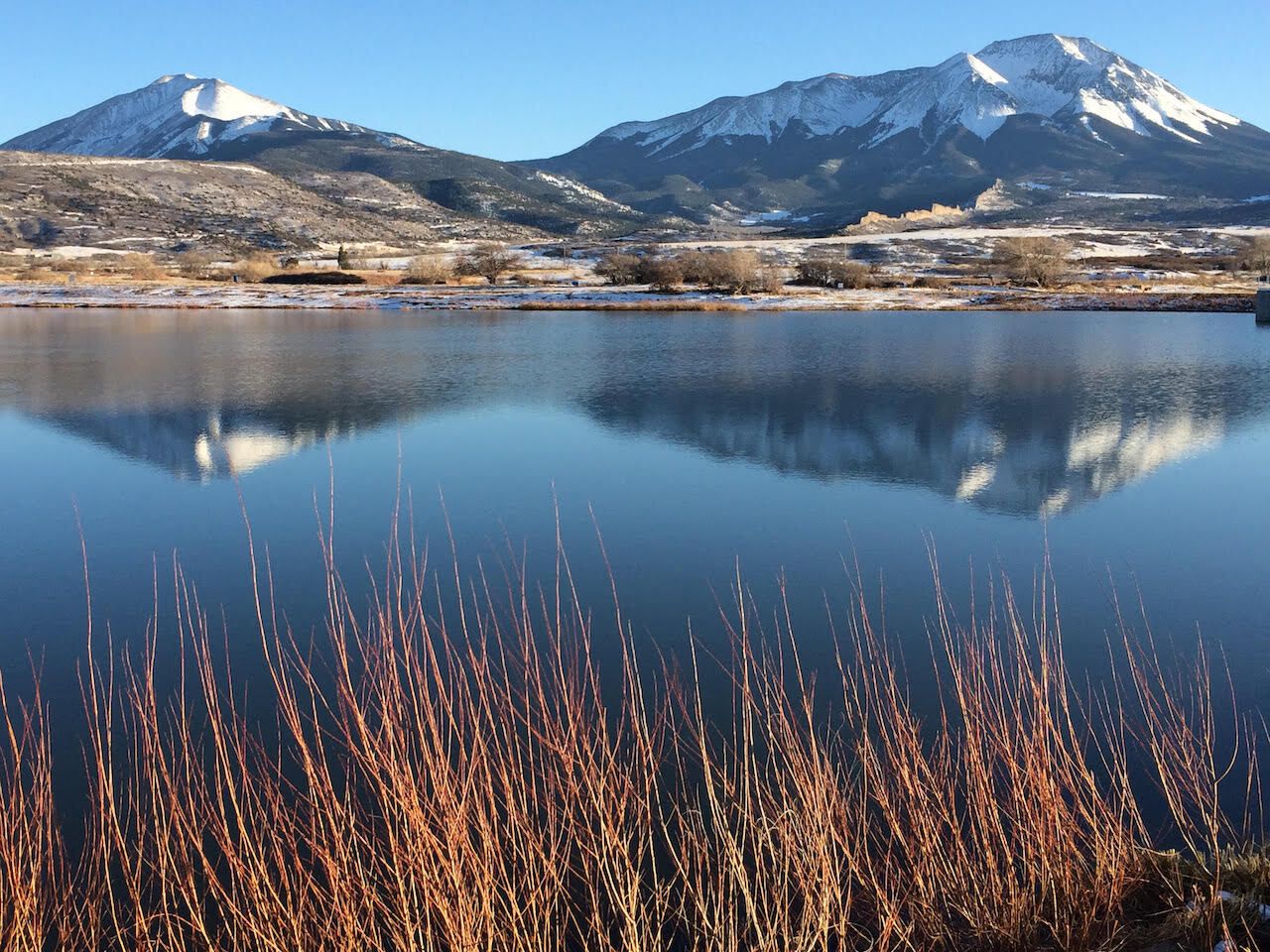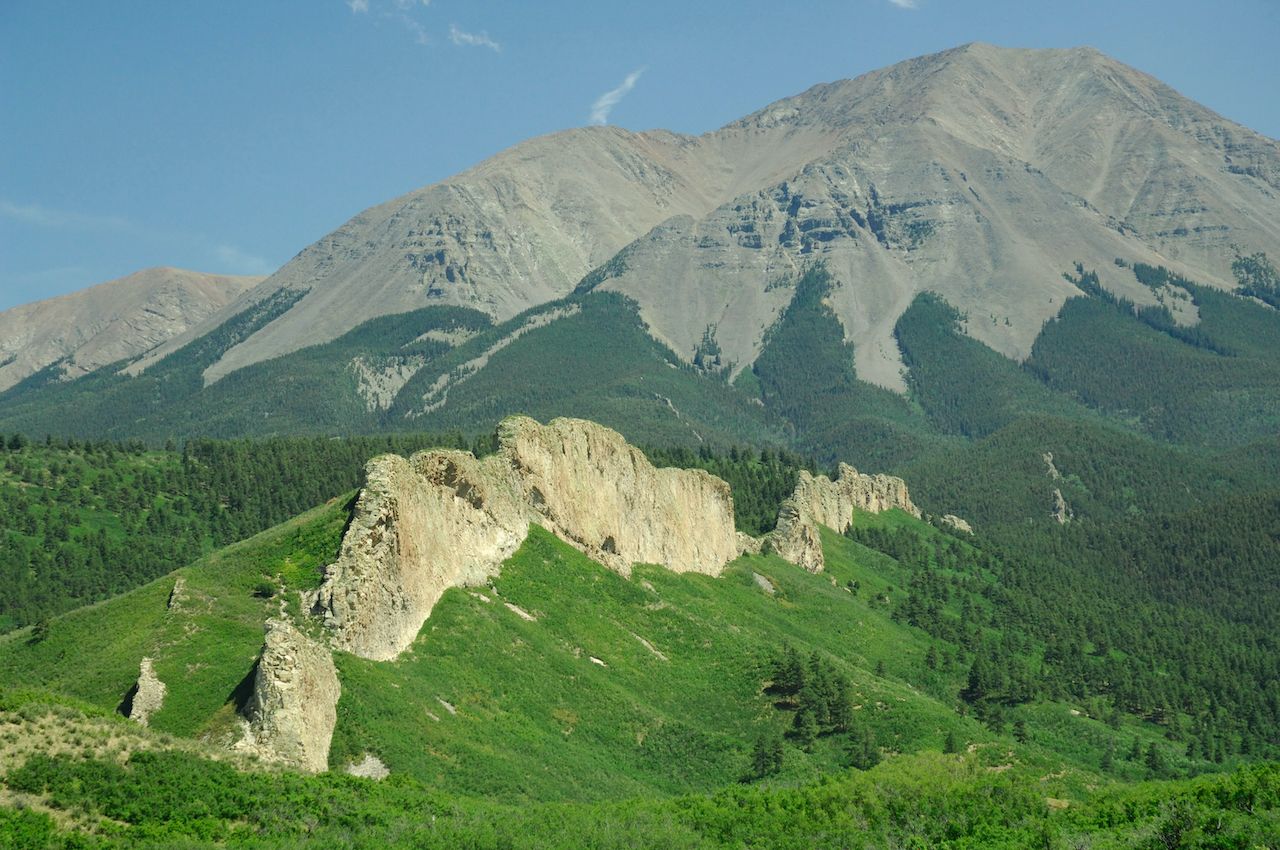The Scenic Highway of Legends — known as the SHOL — is a 70-mile stretch of State Highway 12 between the southern Colorado towns of Trinidad and La Veta that serves as an exemplary demonstration of why visitors come to Colorado. Its rugged beauty earned it an official spot earlier this year in the National Scenic Byway system.
Running adjacent to the Spanish Peaks Wilderness, the SHOL crosses the pine-tree-lined Cuchara Pass and passes the clear waters of Monument Lake. Views extend across the billowing high country to the 13,626-foot West Spanish Peak and even higher mountains beyond. Various pull-off points lead to trailheads popular with local hikers and bikers that meander into the dense forest, and off the main highway to the jagged 11,248-foot summit of Cordova Pass. In winter, many of these trailheads offer access to backcountry skiing and snowshoeing.






